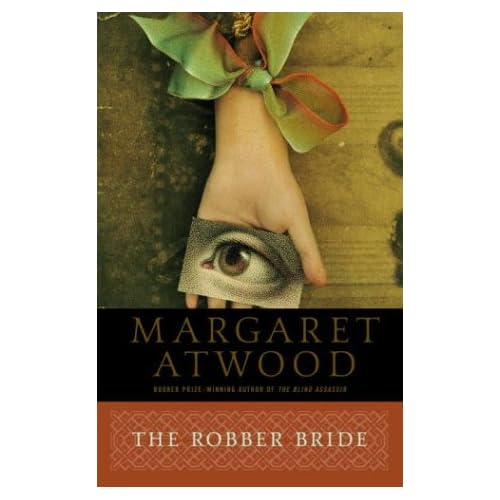
Margaret Atwood’s The Robber Bride, offers us a feminist version of the fairy-tale The Robber Bridegroom. Familiar with the world of fairy tales, this isn’t the first time Atwood has been inspired by one, having spun off the Blue Beard tale in her collection of short stories, Blue Beard’s Egg. While the original fairytale is about a band of robbers with predatory, cannibalistic characteristics, here it is a woman who preys on men and sucks their life force out of them.
The story starts at a restaurant named Toxique, where three unlikely friends meet up for their monthly lunch - Tony, a diminutive war historian, Charis, a flower-child who believes in the powers of the soul and Roz, an entrepreneur with Catholic-Jewish origins. What unites the three is their experience with Zenia, who has over a span of three decades entered and wrecked havoc in the lives of each one of them, draining them on the personal front, making away with their men, as well as financial front, cheating, robbing, embezzling them of money and resources. It is almost apt then, that Zenia makes her re-appearance after having faked her death some years ago, at Toxique, for what is she after all, if not a toxic substance that has poisoned their lives, leaving them scarred?
Justifying her choice of a “villainess” who wrecks havoc instead of the standard fearsome villain (à la Blue Beard), Atwood questions the disappearance of the Lady Macbeths and Ophelias from the gory world of literature, saying that presenting a woman in dark shades doesn’t mean you are anti-female, merely that you truly believe in the equality of the sexes. “Equality means equally bad as well as equally good.” Zenia, is an embodiment of the evil in every way possible – armed with a beauty and an “aura” that men can’t resist, she knows how to work the field (pun intended), choosing her victims carefully, doing her homework well, leaving no chance of failure once she’s on the battle field, slipping through their defenses, disarming them skilfully before launching her attack. The novel, built in a Russian doll structure, slowly unveils the individual tales of Tony, Charis and Roz, revealing a horrifying tale of childhood neglect and abuse that has moulded them into the women they are, as well as their own encounter with Zenia, coming to a full-circle with the death of Zenia.
I embarked on the Atwood journey in 2004, with The Handmaid’s Tale and there has truly been no looking back, for each and every on of her books has held me in their spell. Witty, grotesque, chilling and horrifying, the novels have made me laugh with delight and sent cold shivers of horror crawling down my back moments after. Each and every book has been devoured, leaving my literary senses satisfied and satiated. The Robber Bride appealed particularly for several reasons. Tony, as a character – the tiny woman who faded into the walls but harboured an unlikely passion for her size and gender, and could methodically, unsentimentally chart inquisitions and conquests and recount tales of blood and gore, appealed immensely, making for a strong and rich character. I must confess, the choice of the female villain also tipped the scales - having always found fascinating the idea of the Femme Fatale, the she-devil who twists her victims around, wrecking complete havoc in their lives, Zenia, as the villainess was as perfect as she could get.
Would I recommend the book? Indulging in redundant questions are we? After The Handmaid’s Tale, The Robber Bride, in my opinion is her best work.

